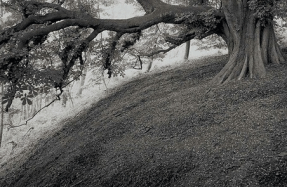
If you were around when digital cameras first appeared on the market, you’ll also remember the advent of raw files. Alongside JPEGs and TIFFs, this option was not immediately well understood, but once it took hold in the minds of creative photographers using cameras like the pivotal Canon EOS 300D, it became a watchword for quality and versatility. People took courses in it, and pride in it – some even wore T-shirts.
And yet JPEG options still exist within your camera’s menu. Why? That’s what we’ll be looking at across these eight pages where seasoned pros and photography tutors explain the practical and personal benefits of the format.
Yes, for many purposes it seems, JPEG is still very much alive and kicking, and lots of the aspects of the format that were considered weaknesses can also be strengths. These files – compromised by compression perhaps – are therefore also smaller, quicker to use and more nimble to share. They can connect photographers to their art, giving an instant hit of creativity compared to the initially tepid look and lengthy processing of raws. They can be liberating.
And for those photographers who always insist on the safety net of raw, perhaps there are harsh questions that need to be asked, too: in an age of mirrorless tools like wysiwyg viewfinders, highlight clipping warnings and real-time histograms that make exposures a lot easier to perfect, are they as technically proficient as they need to be to get it right, ‘straight out of the tin’?
Nikon
Neil Freeman
Speed it up
Harnessing the benefits of JPEG can help increase shooting speed and make for a quicker, easier workflow, but you need to understand the drawbacks, too, says Neil Freeman…
There is a time and place for shooting both JPEG and raw format, and a competent photographer should understand both formats, so they know how to get the best quality and most effective workflow.
Though raw has become very popular, JPEGs have a lot of advantages. If you’re confident that you don’t need to do a lot of post processing, a correctly exposed JPEG ‘straight out of camera’ can easily be transferred to your smart device allowing you to quickly post images to social media.
Shooting in JPEG mode also gives you a smaller file size compared to raw, so image data is written to the card more quickly. This clears down the camera’s buffer meaning you can shoot bursts of images for longer, which can be important for sports, action, and wildlife subjects.
This can also be a downside, as a JPEG’s smaller file size comes from compression. The format was created to save space on storage devices, which were very expensive at the time. As compression is increased, and the file size becomes smaller, more data is discarded, which becomes very restrictive in editing and damaging to image quality with






